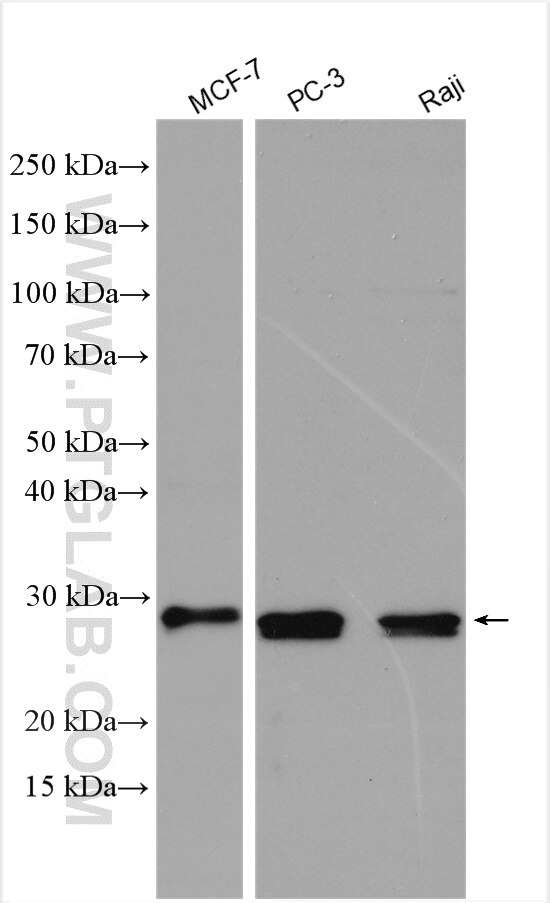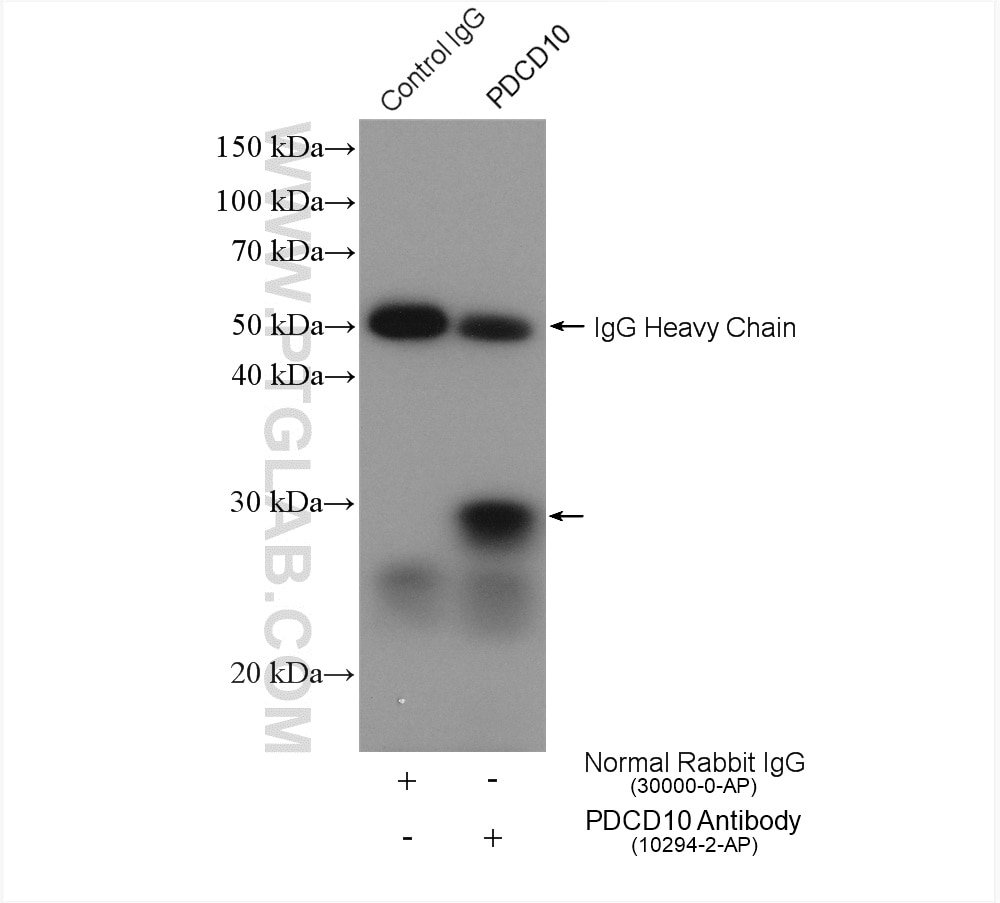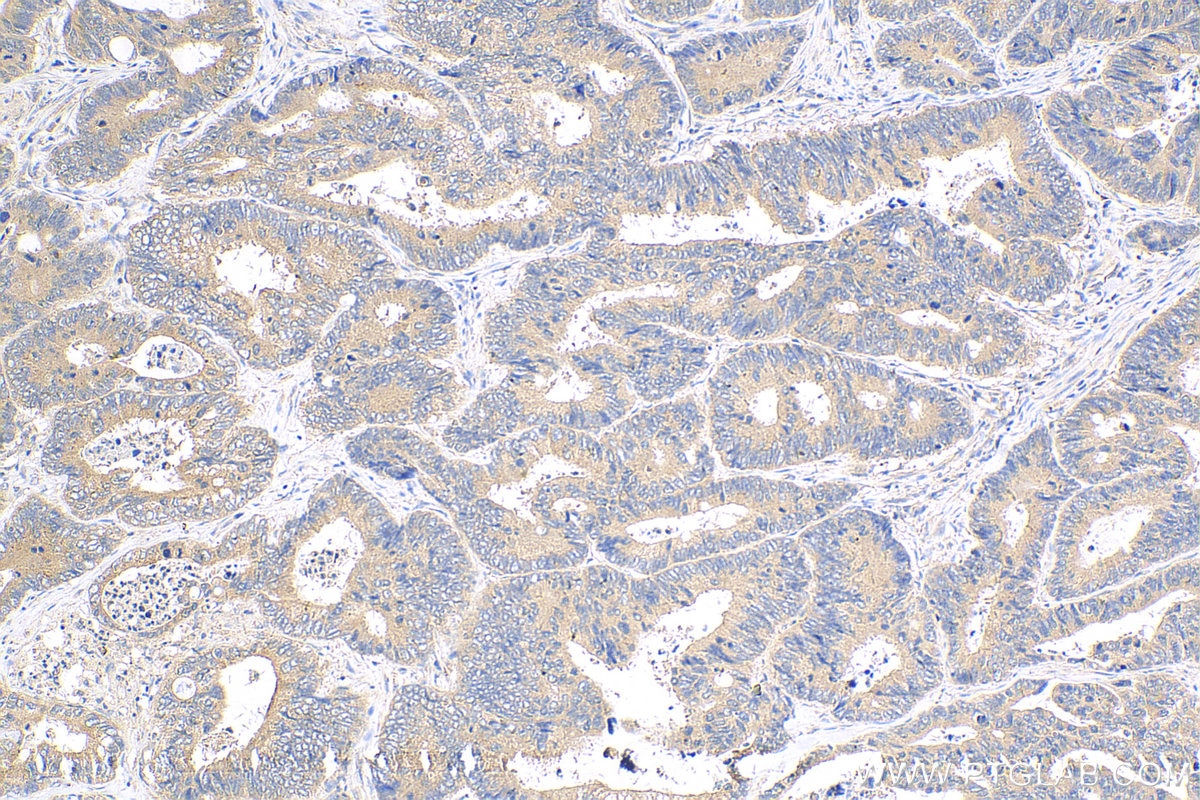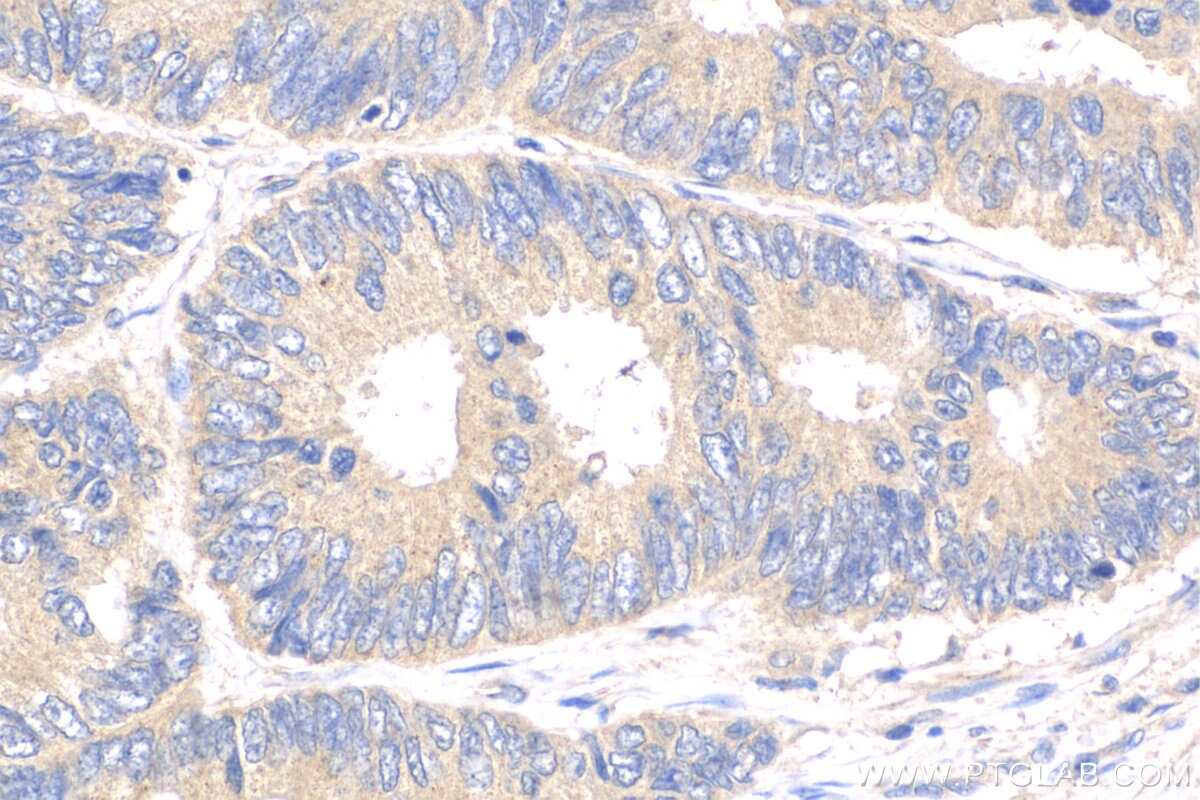- Phare
- Validé par KD/KO
Anticorps Polyclonal de lapin anti-CCM3/PDCD10
CCM3/PDCD10 Polyclonal Antibody for WB, IP, IHC, ELISA
Hôte / Isotype
Lapin / IgG
Réactivité testée
Humain, rat, souris
Applications
WB, IHC, IF, IP, ELISA
Conjugaison
Non conjugué
N° de cat : 10294-2-AP
Synonymes
Galerie de données de validation
Applications testées
| Résultats positifs en WB | cellules MCF-7, cellules PC-3, cellules Raji |
| Résultats positifs en IP | cellules MCF-7, |
| Résultats positifs en IHC | tissu de cancer du côlon humain, il est suggéré de démasquer l'antigène avec un tampon de TE buffer pH 9.0; (*) À défaut, 'le démasquage de l'antigène peut être 'effectué avec un tampon citrate pH 6,0. |
Dilution recommandée
| Application | Dilution |
|---|---|
| Western Blot (WB) | WB : 1:500-1:1000 |
| Immunoprécipitation (IP) | IP : 0.5-4.0 ug for 1.0-3.0 mg of total protein lysate |
| Immunohistochimie (IHC) | IHC : 1:50-1:500 |
| It is recommended that this reagent should be titrated in each testing system to obtain optimal results. | |
| Sample-dependent, check data in validation data gallery | |
Applications publiées
| KD/KO | See 10 publications below |
| WB | See 17 publications below |
| IHC | See 4 publications below |
| IF | See 4 publications below |
| IP | See 1 publications below |
Informations sur le produit
10294-2-AP cible CCM3/PDCD10 dans les applications de WB, IHC, IF, IP, ELISA et montre une réactivité avec des échantillons Humain, rat, souris
| Réactivité | Humain, rat, souris |
| Réactivité citée | rat, Humain, souris |
| Hôte / Isotype | Lapin / IgG |
| Clonalité | Polyclonal |
| Type | Anticorps |
| Immunogène | CCM3/PDCD10 Protéine recombinante Ag0348 |
| Nom complet | programmed cell death 10 |
| Masse moléculaire calculée | 25 kDa |
| Poids moléculaire observé | 25-30 kDa |
| Numéro d’acquisition GenBank | BC002506 |
| Symbole du gène | PDCD10 |
| Identification du gène (NCBI) | 11235 |
| Conjugaison | Non conjugué |
| Forme | Liquide |
| Méthode de purification | Purification par affinité contre l'antigène |
| Tampon de stockage | PBS with 0.02% sodium azide and 50% glycerol |
| Conditions de stockage | Stocker à -20°C. Stable pendant un an après l'expédition. L'aliquotage n'est pas nécessaire pour le stockage à -20oC Les 20ul contiennent 0,1% de BSA. |
Informations générales
PDCD10, also named CCM3 and TFAR15, belongs to the PDCD10 family. PDCD10 promotes cell proliferation, increases MAPK activity and modulates apoptotic pathways. PDCD10 is important for cell migration and for normal structure and assembly of the Golgi complex. PDCD10 is required for normal angiogenesis, vasculogenesis and hematopoiesis during embryonic development, moreover, defects in PDCD10 showed abnormal cardiovascular development. Catalog#10294-2-AP is a rabbit polyclonal antibody raised against the full-length PDCD10 of human origin.
Protocole
| Product Specific Protocols | |
|---|---|
| WB protocol for CCM3/PDCD10 antibody 10294-2-AP | Download protocol |
| IHC protocol for CCM3/PDCD10 antibody 10294-2-AP | Download protocol |
| IP protocol for CCM3/PDCD10 antibody 10294-2-AP | Download protocol |
| Standard Protocols | |
|---|---|
| Click here to view our Standard Protocols |
Publications
| Species | Application | Title |
|---|---|---|
Nat Cell Biol CCM3 is a gatekeeper in focal adhesions regulating mechanotransduction and YAP/TAZ signalling.
| ||
J Clin Invest Mutations in 2 distinct genetic pathways result in cerebral cavernous malformations in mice.
| ||
Cell Rep The STRIPAK complex is required for radial sorting and laminin receptor expression in Schwann cells | ||
Development Ccm3, a gene associated with cerebral cavernous malformations, is required for neuronal migration.
| ||
Aging (Albany NY) PDCD10 promotes the aggressive behaviors of pituitary adenomas by up-regulating CXCR2 and activating downstream AKT/ERK signaling
| ||
J Cell Sci CCM3/PDCD10 stabilizes GCKIII proteins to promote Golgi assembly and cell orientation.
|





